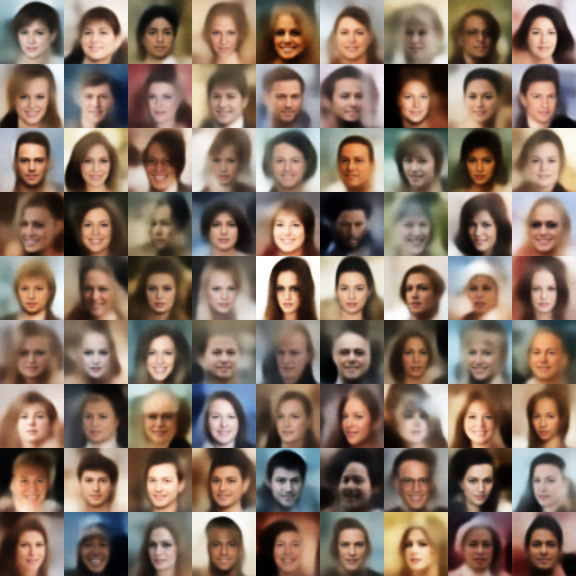If you have interesting ideas or data, please contact me quickly at wangzichaochaochao@gmail.com .
Variational autoencoders are interesting generative models, which combine ideas from deep learning with statistical inference. They can be used to learn a low dimensional representation Z of high dimensional data X such as images (of e.g. faces). In contrast to standard auto encoders, X and Z are random variables. It’s therefore possible to sample X from the distribution P(X| Z), thus creating e.g. images of faces, MNIST Digits, or speech.
Here we use VAE to realize face generation.
变分自动编码器是有趣的生成模型,它将深度学习和统计推断的思想结合起来。 它们可用于学习高维数据X的低维表示Z,例如图像(例如面部)。 与标准自动编码器相比,X和Z是随机变量。 因此,可以从分布P(X | Z)中对X进行采样,从而产生例如 面部图像,MNIST数字或语音。
这儿使用 VAE 来实现人脸生成功能。
You can use your own data or directly use the data of a predefined task.
你可以使用自己的数据或者直接使用预定义任务的数据。
CelebFaces Attributes (CelebA) Dataset https://www.kaggle.com/jessicali9530/celeba-dataset/home
- python 3+, e.g. python==3.6
- tensorflow version 2, e.g. tensorflow==2.0.0
- tensorflow-datasets
python train_vae_model.pypython inference_by_vae_model.pyThe above simple Convolutional Variational Autoencoder can only generate blurred face images. If you want to get better results, we recommend VQ-VAE-2, which can generate the following high-definition images.
上述简单的卷积变分自编码器只能生成模糊的人脸图片,如果你想获得更好的效果,推荐使用VQ-VAE-2,它能生成如下的高清图像。


